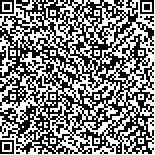许戌鸾,谢咏祺,张庆苏,等.颈髓损伤患者吞咽障碍危险因素分析[J].中华物理医学与康复杂志,2023,45(12):1099-1103
扫码阅读全文

|
| 颈髓损伤患者吞咽障碍危险因素分析 |
|
| |
| DOI:10.3760/cma.j.issn.0254-1424.2023.12.007 |
| 中文关键词: 颈髓损伤 吞咽障碍 危险因素 回归分析 |
| 英文关键词: Cervical spinal cord injury Dysphagia Risk factors Regression analysis |
| 基金项目:国家科技部科技攻关项目资助(2018YFF0301104) |
|
| 摘要点击次数: 3855 |
| 全文下载次数: 3879 |
| 中文摘要: |
| 目的 分析颈髓损伤患者发生吞咽障碍的影响因素,为临床筛查和干预提供依据。 方法 选取符合纳入标准的颈髓损伤患者病例资料110例,根据功能性经口进食量表评估颈髓损伤患者吞咽功能,分为重度吞咽障碍组(19例)、轻度吞咽障碍组(35例)和正常吞咽功能组(56例),颈髓损伤后吞咽障碍的发生率为49.1%(54/110)。收集110例患者的性别、年龄、损伤平面、损伤程度、损伤时间、损伤原因、手术方式、气管切开状态、是否发生肺炎、是否发生咽部肿胀等相关临床资料;对可能影响颈髓损伤患者吞咽功能的资料进行单因素和多因素Logistic回归分析。 结果 单因素Logistic回归分析显示,患者的损伤严重程度、气管切开状态、住院期间是否发生肺炎以及是否发生咽部肿胀可能会影响颈髓损伤患者吞咽功能(P<0.05)。将上述单因素分析中P<0.01的变量(气管切开状态、是否发生肺炎、是否发生咽部肿胀)纳入无序多分类Logistic回归分析,结果显示,气管切开状态[OR=12.927,95% CI=(2.034,82.177)]、住院期间发生肺炎[OR=5.537,95% CI=(1.258,24.367)]是颈髓损伤患者发生重度吞咽障碍的独立危险因素(P<0.05)。 结论 患者气管切开状态、有肺部炎症可能是颈髓损伤重度吞咽障碍患者的危险因素。 |
| 英文摘要: |
| Objective To analyze the factors influencing dysphagia after an injury to the cervical spinal cord (CPCI) to provide a basis for clinical screening and intervention. Methods A total of 110 CPCI patients with dysphagia were divided into a severe dysphagia group (n=19), a mild dysphagia group (n=35), and a control group (n=56) according to their functional oral intake scale scores. Data on gender, age, level of injury, degree of damage, duration of injury, causes of injury, surgical mode, tracheotomy status, occurrence of pneumonia and pharynx swelling were collected. Univariate and multivariate logistic regressions were evaluated to identify factors affecting swallowing. Results The regressions highlighted age, the severity of the spinal cord injury, tracheotomy status, and the occurrence of pneumonia and pharyngeal swelling during hospitalization as the best predictors of swallowing difficulties. Multifactoral logistic regression analysis revealed that undergoing tracheotomy and catching pneumonia during hospitalization were major risk factors for severe dysphagia. Conclusions Tracheotomy and pneumonia during hospitalization are useful predictors of severe dysphagia after a cervical spinal cord injury. |
|
查看全文
查看/发表评论 下载PDF阅读器 |
| 关闭 |
|
|
|